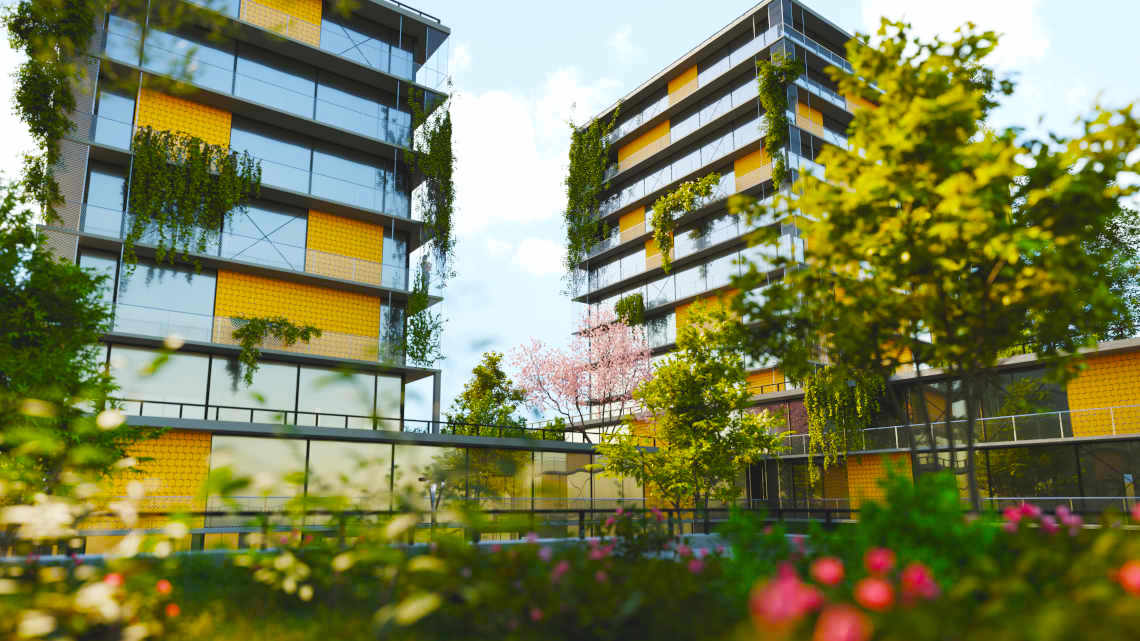綠色建材市場研究

綠建築材料具有永續、環保、節能等特性。我們使用這些材料建造對環境影響最小的建築物。它們減少能源消耗並促進健康生活。綠色建築材料來自可再生資源或回收材料。它們經久耐用且維護成本低。
綠建築材料的例子包括:
- 木材:採自經過認證的森林
- 竹子:可以在建築中取代木材的可再生材料
- 再生鋼:由碳足跡較低的再生材料製成
- 再生塑料:由PET瓶等再生材料製成的塑料
- 天然絕緣材質:由羊毛、棉花和纖維素等材料製成
- 低排放地板:由低揮發性有機化合物(VOC)材料製成。例如竹子、軟木和油氈
- 太陽能板:產生再生能源並減少能源消耗的太陽能板
- 減少用水量的節水裝置,例如低流量馬桶、淋浴噴頭和水龍頭。
使用綠色建築材料對於創建可持續、節能的建築至關重要。這些材料的另一個優點是它們對環境的影響最小。
為什麼綠建築材料很重要?
綠建築材料不可少。它們有助於創建對環境友善的永續建築。它們對居住者來說也更健康。以下是綠色建築材料至關重要的一些關鍵原因:
綠色建築材料是永續的,對環境的影響最小。它們通常由可再生、回收或自然資源製成。
公司必須以對環境負責的方式收穫它們。此過程有助於減少浪費、保護自然資源並減少污染。
另一個關鍵點是許多綠色建築材料都是節能的。事實上,它們有助於減少能源消耗並降低建築物的碳足跡。例如,太陽能電池板可以產生再生能源。天然材料隔熱可以進一步降低加熱和冷卻成本。
綠色建築材料有助於創造更健康的生活環境。它們通常由無毒材料製成。換句話說,這些材料不太可能向空氣中釋放有害化學物質。此功能可改善室內空氣品質。它還降低了與室內空氣品質差相關的健康問題的風險。
雖然綠色建築材料的前期成本可能更高,但從長遠來看它們可以省錢。例如,節能材料可以幫助減少水電費。耐用的材料可以隨著時間的推移降低維護成本。
使用綠色建築材料可以讓業主受益。它使他們的建築能夠獲得綠色建築認證。例如,它們可以符合 LEED(領先能源與環境設計)標準。此外,綠建築認證可以增加房產價值並提高適銷性。它也顯示了對永續發展的承諾。
總之,使用綠色建築材料至關重要。它促進了對環境影響最小的可持續、節能建築的創建。它還促進更健康的生活環境和節省成本。
主要職位
以下是與綠色建材相關的一些關鍵職位:
- 永續設計建築師: 負責設計可持續、節能和環保的建築。他們與客戶、工程師以及承包商合作。他們共同創建了旨在滿足綠色建築認證標準的結構。
- LEED 認證專業人員: LEED 是一項綠色建築認證計劃。 LEED 認證專業人員 (AP) 已通過 LEED AP 考試。他們深入了解綠建築實踐、原則和標準。
- 綠建築顧問: 為客戶提供指導和建議。他們幫助他們設計、建造和維護可持續、節能的建築。顧問可以提供現有結構的評估或推薦綠色建築材料。他們還幫助客戶獲得綠色建築認證。
- 永續發展協調員: 管理和實施組織內的永續發展措施。例如,他們制定可持續發展計劃並追蹤能源和資源的使用情況。他們也提倡可持續的做法。
- 環境工程師: 確保建築物對環境的影響最小。他們可能致力於節水、廢棄物管理和能源效率專案。
- 綠色建材生產企業: 生產環保建築材料。例如,他們生產再生鋼、天然絕緣材料和低排放地板。他們致力於創造可持續且節能的材料。他們確保這些材料對建築居住者來說是健康的。
- 能源審核員: 評估建築物的能源效率。他們還提供了減少能源消耗的建議。他們可以檢查設施、分析能源帳單並推薦節能技術和實踐。
這些只是與綠色建材相關的幾個職稱。許多其他職業和職稱在創建綠色建築中發揮作用。
為什麼企業需要綠色建材
出於多種原因,企業需要綠色建築材料。節省成本再次發揮作用。從長遠來看,綠色建材可以幫助企業節省金錢。低排放絕緣材料和 LED 照明等節能材料可以降低能源成本。此外,耐用的材料可以隨著時間的推移降低維護成本。
綠建築越來越受到消費者的青睞。現代消費者傾向於關注環境。使用綠色建築材料的企業可以從競爭對手中脫穎而出。例如,他們可以吸引重視永續發展的客戶。
許多地方和州政府都制定了建築規範和法規。其中一些法律涉及能源效率和環境永續性。使用綠色建築材料的企業可以遵守這些規定並避免處罰。
綠色建材可以為員工創造更健康的工作環境。例如,低VOC油漆和天然隔熱材料可以改善室內空氣品質。它們還可以降低與室內空氣品質不佳相關的健康問題的風險。
關鍵成功因素
綠色建築材料必須是可持續的並且對環境的影響最小。此外,製造商應使用可再生資源或回收材料。或者他們至少可以使用以對環境負責的方式收穫的天然材料。它們還應該具有較長的使用壽命,並且在使用壽命結束時易於回收或重複使用。
許多綠色建築材料都是節能的。它們有助於減少能源消耗並降低建築物的碳足跡。這些材料應該能夠使建築物隔熱。因此,它們可以減少對加熱、冷卻和照明的需求。
綠色建築材料應該耐用且能夠承受各種因素。隨著時間的推移,它們也應該能夠抵抗磨損。同樣,這些材料應該防潮、防蟲、防腐。它們也必須長期保持結構完整性。
綠色建築材料的前期成本可能會更高。但它們在整個生命週期中應該具有成本效益。他們應該能夠透過提高能源效率來節省金錢。用戶還將享受到降低的維護成本以及改善的居住者健康和生產力。
安全與永續發展
綠建築材料應對環境和建築居住者安全。製造商應使用無毒材料製造它們。這些材料不應將有害化學物質釋放到空氣中。它們還應該易於維護和清潔,以防止黴菌和其他過敏原的積聚。
應由信譽良好的第三方機構對您的綠色建築材料進行認證。此類組織的一個例子是森林管理委員會 (FSC)。或者您可以讓從搖籃到搖籃 (C2C) 進行認證。此步驟可確保您的建築材料符合永續性和環境標準。
簡而言之,綠色建築材料的成功取決於其永續性。它們還必須節能、耐用且具有成本效益。這些材料應符合健康和安全標準,並且您應對它們進行認證。您是否為您的專案選擇綠色建築材料?在做出最終選擇之前請考慮這些因素。
關於綠色建材市場研究
貴公司是否打算進入綠色建材市場?您必須詳細進行定量和定性市場研究。研究可以幫助您深入了解競爭對手、市場、產品和客戶。您需要建立焦點小組以及調查和訪談。您還需要用戶體驗市場研究。它將告訴您您的產品如何滿足人們的需求、需求和能力。
SIS International 提供所有這些研究選擇。我們還提供策略市場研究、競爭分析和市場進入研究。 SIS 進行市場機會研究和市場規模研究。我們可以幫助您制定成功的進入市場策略。請立即聯絡我們進行諮詢!


